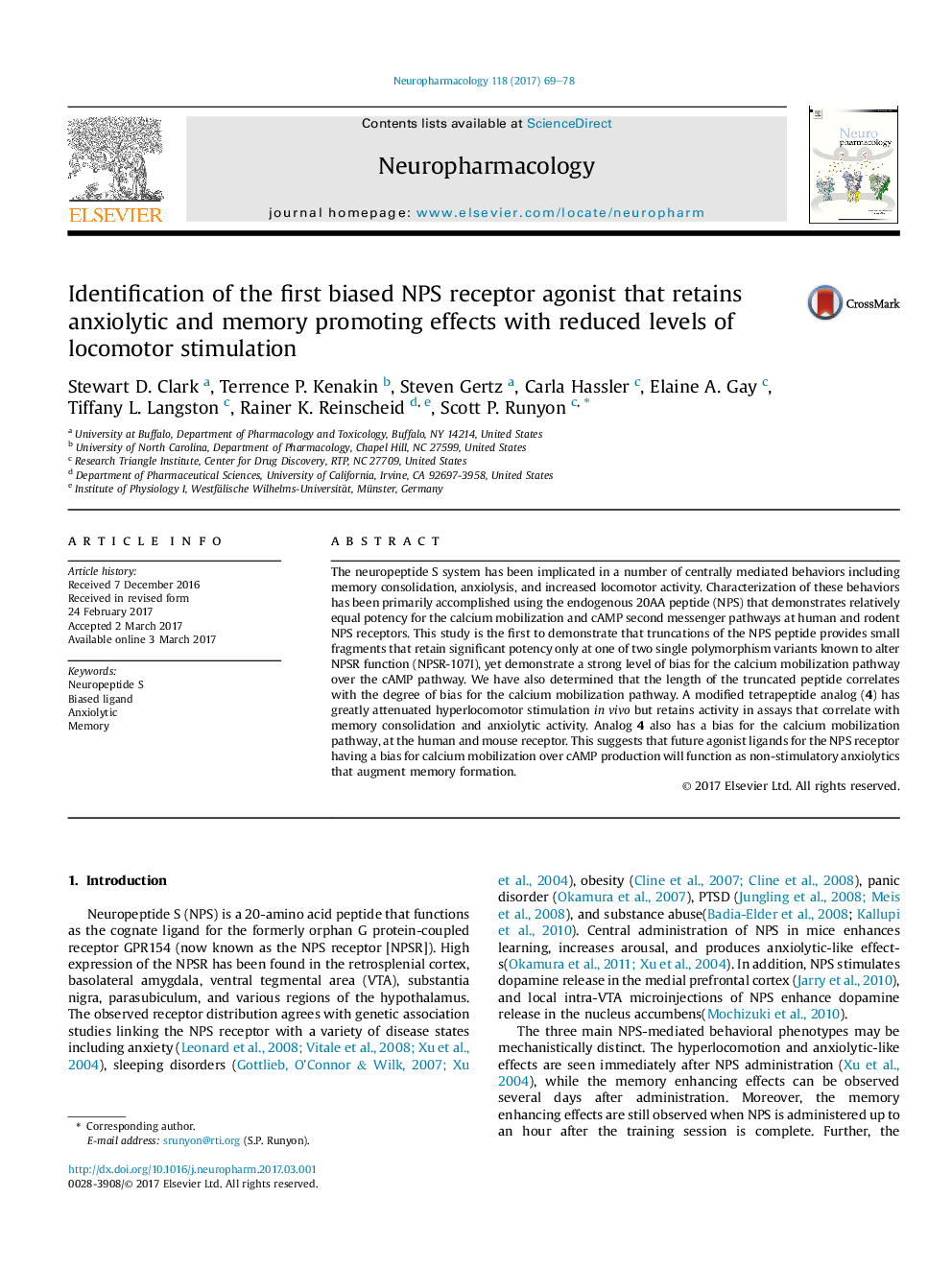| Article ID | Journal | Published Year | Pages | File Type |
|---|---|---|---|---|
| 5549016 | Neuropharmacology | 2017 | 10 Pages |
The neuropeptide S system has been implicated in a number of centrally mediated behaviors including memory consolidation, anxiolysis, and increased locomotor activity. Characterization of these behaviors has been primarily accomplished using the endogenous 20AA peptide (NPS) that demonstrates relatively equal potency for the calcium mobilization and cAMP second messenger pathways at human and rodent NPS receptors. This study is the first to demonstrate that truncations of the NPS peptide provides small fragments that retain significant potency only at one of two single polymorphism variants known to alter NPSR function (NPSR-107I), yet demonstrate a strong level of bias for the calcium mobilization pathway over the cAMP pathway. We have also determined that the length of the truncated peptide correlates with the degree of bias for the calcium mobilization pathway. A modified tetrapeptide analog (4) has greatly attenuated hyperlocomotor stimulation in vivo but retains activity in assays that correlate with memory consolidation and anxiolytic activity. Analog 4 also has a bias for the calcium mobilization pathway, at the human and mouse receptor. This suggests that future agonist ligands for the NPS receptor having a bias for calcium mobilization over cAMP production will function as non-stimulatory anxiolytics that augment memory formation.
